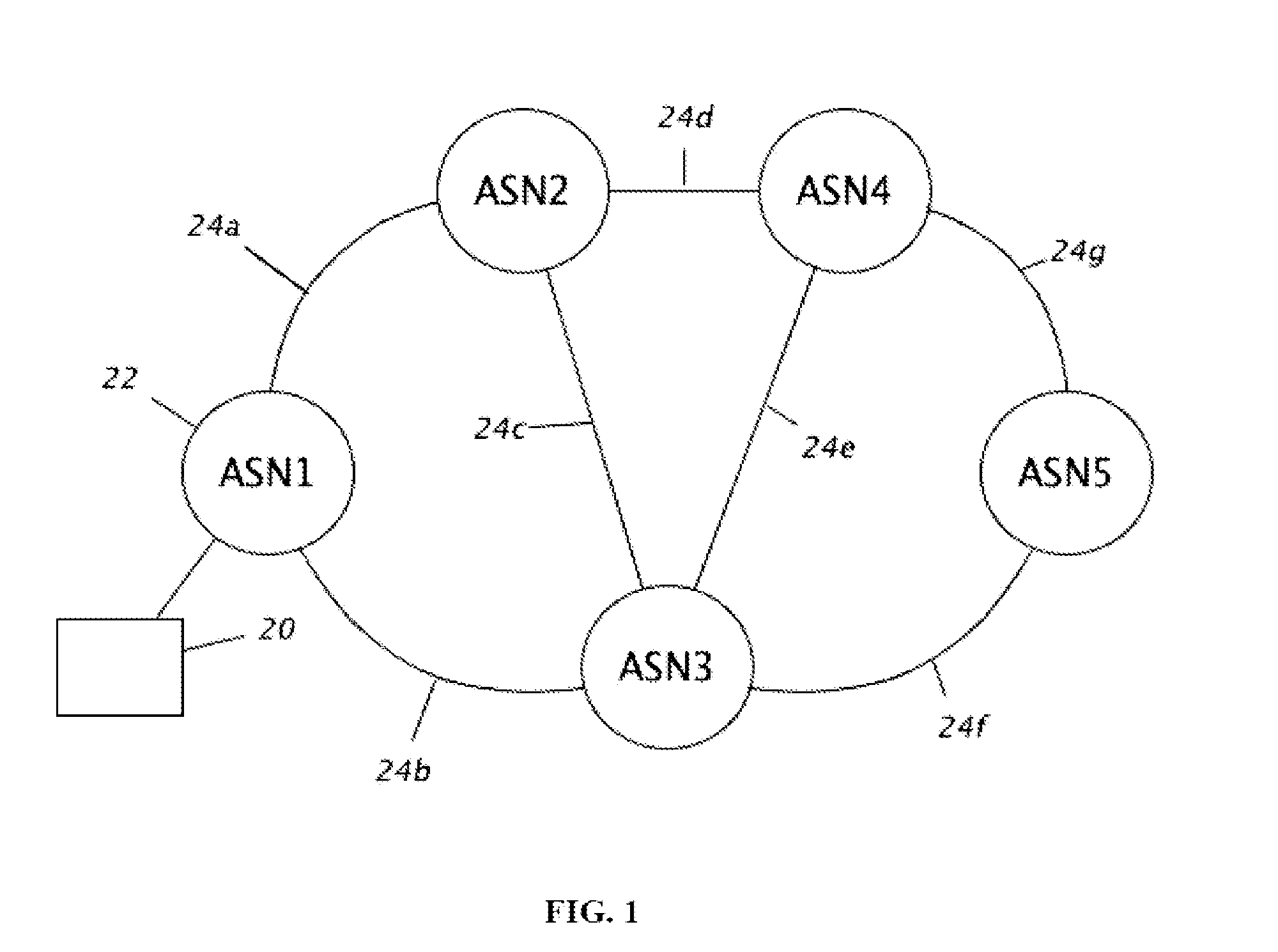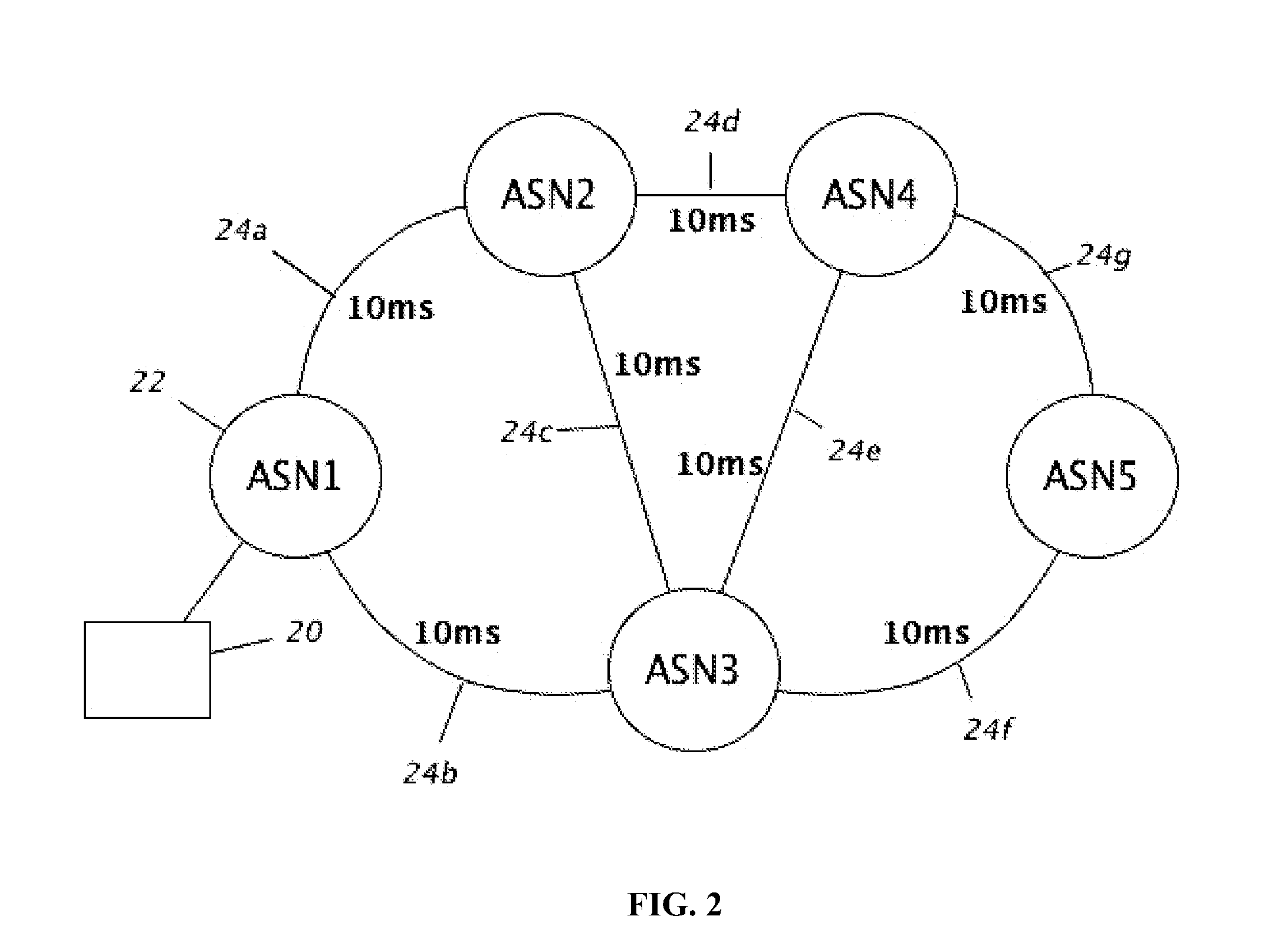Routing system for internet traffic
a routing system and internet traffic technology, applied in the field of interconnected networks, can solve the problems of not ensuring that the route is optimal in terms of performance, and less than optimal solution for routing traffic from multi-homed locations or data centers
- Summary
- Abstract
- Description
- Claims
- Application Information
AI Technical Summary
Benefits of technology
Problems solved by technology
Method used
Image
Examples
Embodiment Construction
[0035]The systems and methods of the present invention enable routing decisions to be automatically made for routing traffic from a multi-homed location in a manner that provides a global optimal solution for routing traffic (using metrics such as performance, cost, and other constraints), and which may use dynamic weight assignment for performance metrics, and a flexible problem definition to add routing rules (e.g. static and restricted routes) to the model. One example of such a routing system 20 is shown in FIG. 1.
[0036]Routing system 20 is located at a first multi-homed location 22 that is part of a first autonomous system AS1. As can be seen in FIG. 1, first autonomous system AS1 is connected via a first route 24a to a second autonomous system AS2 and via a second route 24b to a third autonomous system AS3. Second autonomous system AS2, in turn, is connected to third and fourth autonomous systems AS3 and AS4 via routes 24c and 24d, respectively. Third autonomous system AS3 is ...
PUM
 Login to View More
Login to View More Abstract
Description
Claims
Application Information
 Login to View More
Login to View More - R&D
- Intellectual Property
- Life Sciences
- Materials
- Tech Scout
- Unparalleled Data Quality
- Higher Quality Content
- 60% Fewer Hallucinations
Browse by: Latest US Patents, China's latest patents, Technical Efficacy Thesaurus, Application Domain, Technology Topic, Popular Technical Reports.
© 2025 PatSnap. All rights reserved.Legal|Privacy policy|Modern Slavery Act Transparency Statement|Sitemap|About US| Contact US: help@patsnap.com



